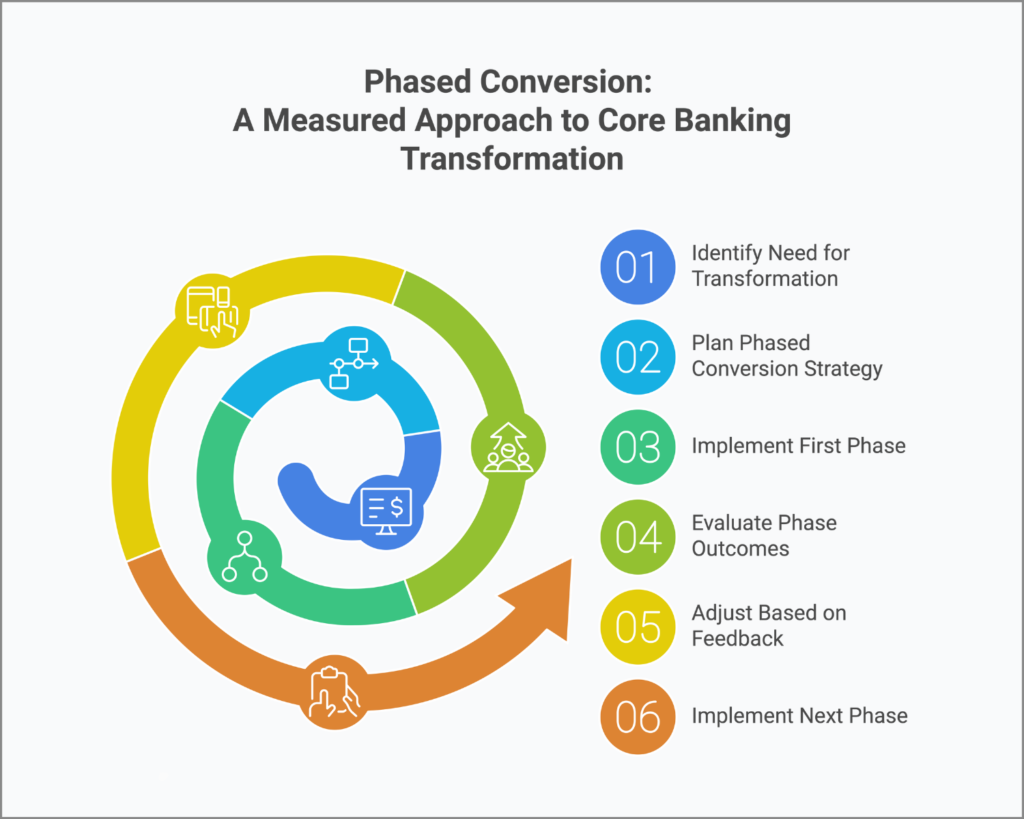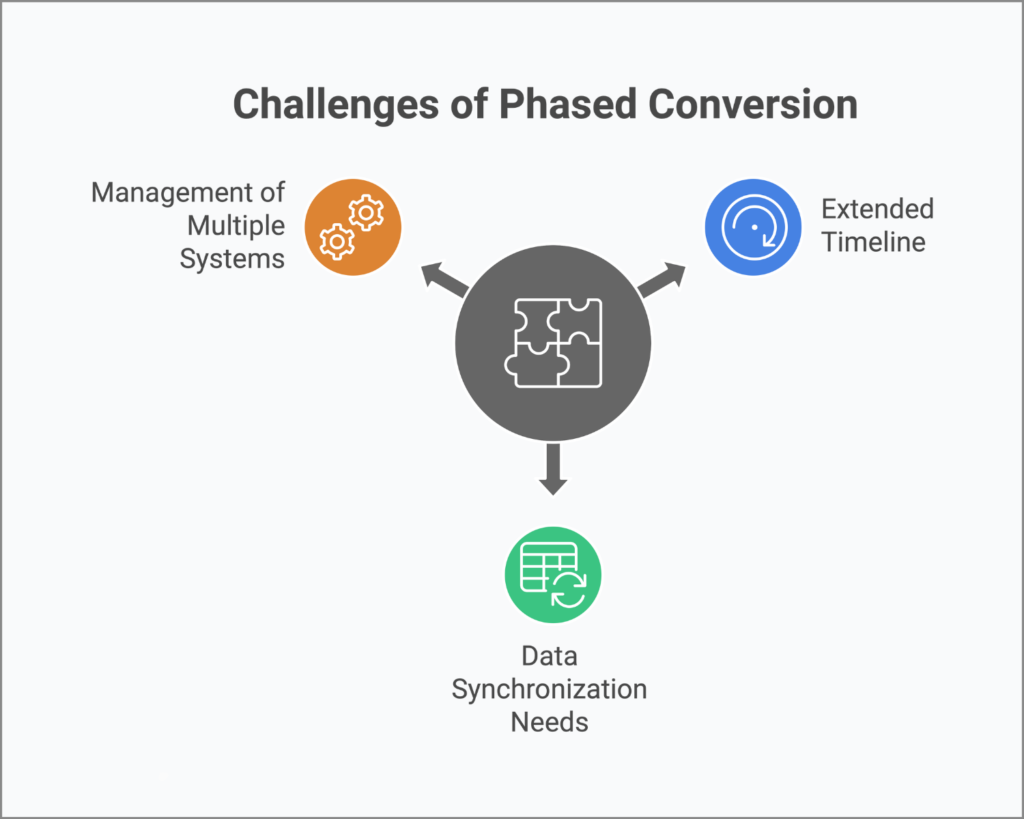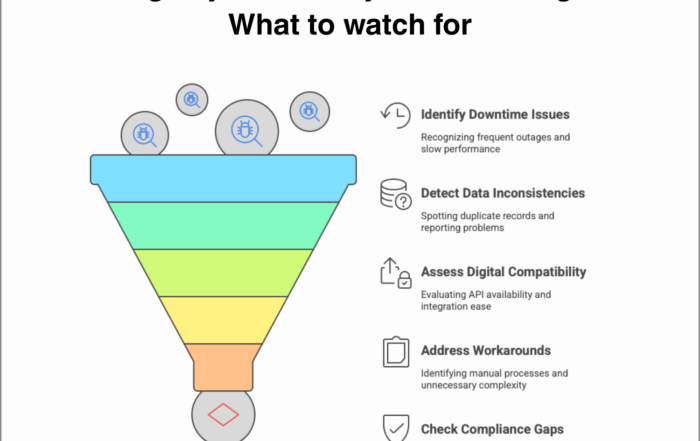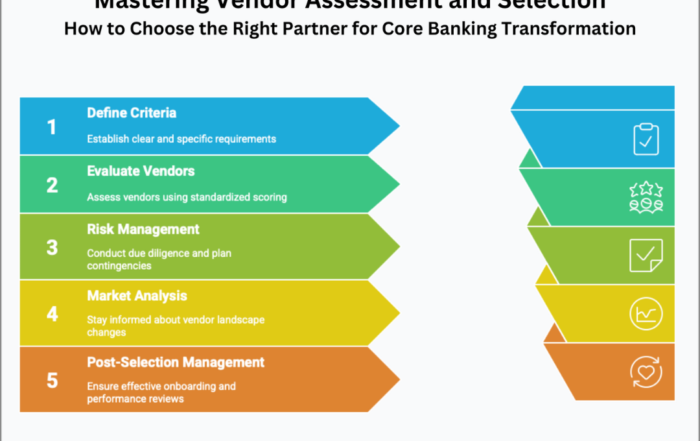
Have you ever tried renovating your home one room at a time?
That’s similar to some bank’s experience with a Phased Conversion during core banking transformations. Unlike the all-or-nothing Big Bang approach, Phased Conversion allows for a step-by-step transition, offering control and flexibility and reducing the risks associated with sweeping changes. Today, we’ll explore why and when a Phased Conversion might be your best choice for navigating complex banking transformations.
What is Phased Conversion?
Phased Conversion is a strategy that involves gradually transitioning to a new core banking system and implementing changes in manageable segments rather than all at once. This could mean updating one department, function, or region at a time, ensuring each piece is in place before moving on to the next. It’s akin to upgrading your banking operations one “room” at a time, ensuring each step is solid before you proceed.
This approach mainly benefits banks with multifaceted systems operating across various regions and service lines. It allows each organization segment to adapt to the change without overwhelming the entire operation.
When to Consider Phased Conversion
Phased Conversion is ideal for banks that:
- Operate on a Complex Scale: Large banks with intricate operations across multiple divisions find this approach allows for focused attention on one area at a time.
- Seek Flexibility: This method allows adjustments based on early phase outcomes.
- Prefer Risk Management: Gradual implementation helps identify and address issues early without widespread impact.
- Need to Maintain Continuous Operations: This allows part of the bank to transition while other areas continue to function without interruption.
Advantages of Phased Conversion
Opting for a Phased approach offers several benefits:
- Risk Mitigation: Each phase is a pilot, with lessons learned applied to subsequent phases.
- Operational Continuity: The bank continues to operate smoothly, with minimal disruptions to daily activities.
- Flexibility for Adjustments: Feedback from each phase can refine the process, enhancing outcomes as you progress.
- Resource Management: It spreads out the demand on resources, preventing overload and facilitating better focus on each transition phase.
Challenges and Risks
However, Phased Conversion isn’t without challenges:
- Extended Timeline: The transformation can take longer, potentially delaying the new system’s benefits.
- Data Synchronization Needs: Maintaining accuracy and consistency across old and new systems during the transition is critical.
- Management of Multiple Systems: Operating parallel systems during the transition can complicate workflows and increase the operational burden.

Implementing a Successful Phased Conversion
To ensure a successful Phased Conversion, consider the following strategies:
- Strategic Phase Planning: Clearly define the scope and objectives of each phase. Prioritize areas based on necessity and readiness.
- Rigorous Testing: Conduct thorough testing before rolling out each phase to ensure functionality and resolve issues.
- Effective Data Synchronization: Employ robust tools and practices to ensure data remains consistent and accurate across all systems.
- Transparent Communication: Keep all stakeholders informed throughout the process. Clear communication ensures alignment and helps manage expectations.
- Ongoing Training and Support: Adequately train your teams for each phase and provide continuous support to address any challenges promptly.
When Gradual Change Makes Sense
A Phased Conversion approach suits banks that prioritize risk management and need to maintain uninterrupted service. It allows for thoughtful implementation, with each step building on the success of the previous one. While it may require more time upfront, the controlled environment it fosters can lead to a more stable and successful transformation.
This methodical approach may slow the pace but enhances the likelihood of a smooth and effective modernization of your banking systems. It’s about getting it right, one step at a time.
If your bank values meticulous change management and prefers to mitigate risks by handling smaller segments of transformation sequentially, Phased Conversion offers a structured path to modernization. It supports technological upgrades and the people and processes that will use them, ensuring every part of your bank is ready to move forward together.
Ready to Explore More?
If you’re interested in learning more about phased conversions and other transformation strategies, head over to our Execution Strategies Hub for comprehensive insights. Don’t forget to check out our Main Infographic for a visual breakdown of each approach. Continue your journey with the Next Spoke Article #3, which dives into another crucial execution method. You can also visit our Conversion Strategies Hub to get a complete overview of all available paths for your core banking transformation. Equip yourself with the knowledge to make the best decision for your bank’s future.
#CoreBankingTransformation #ExecutionStrategy




